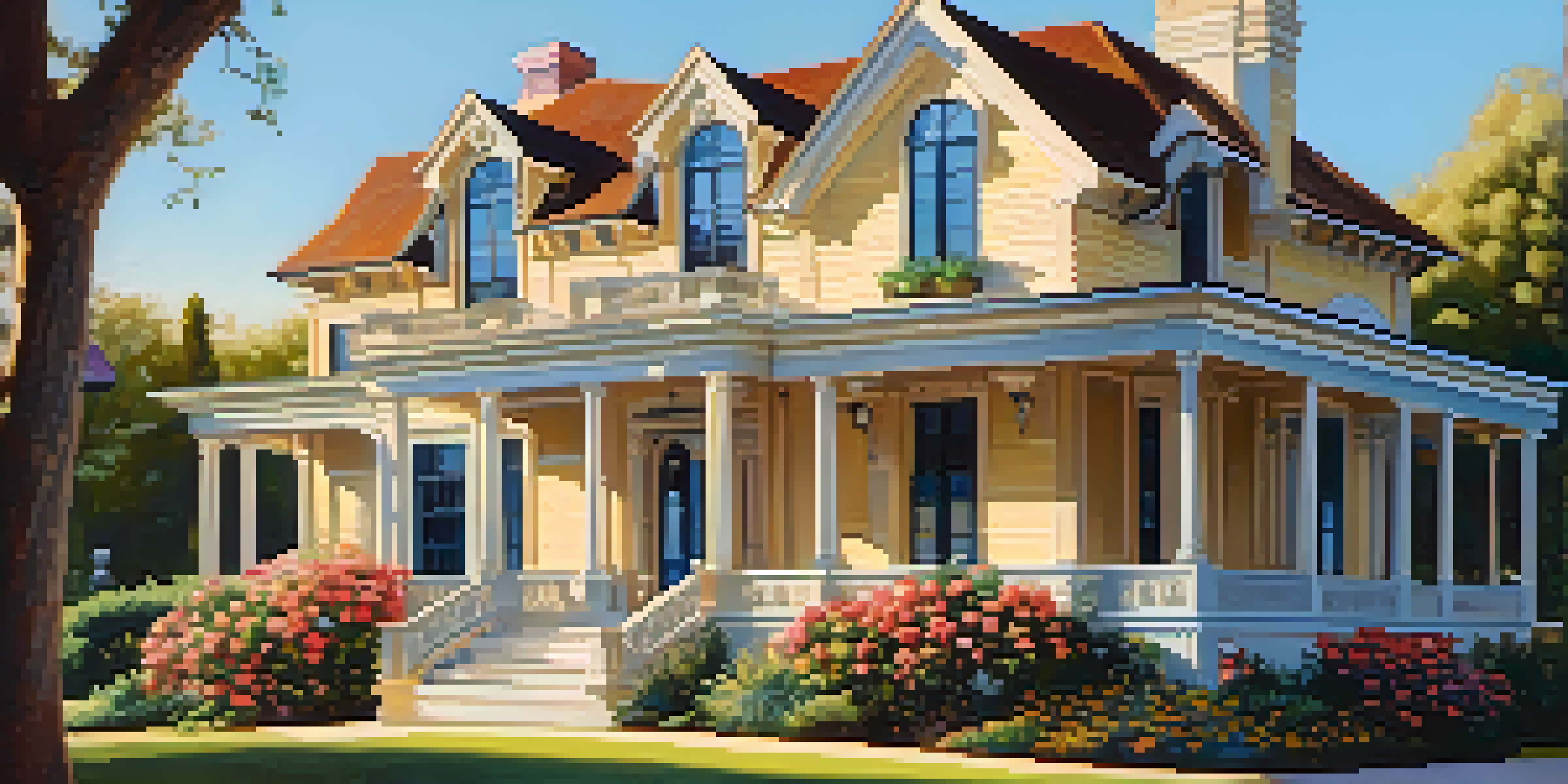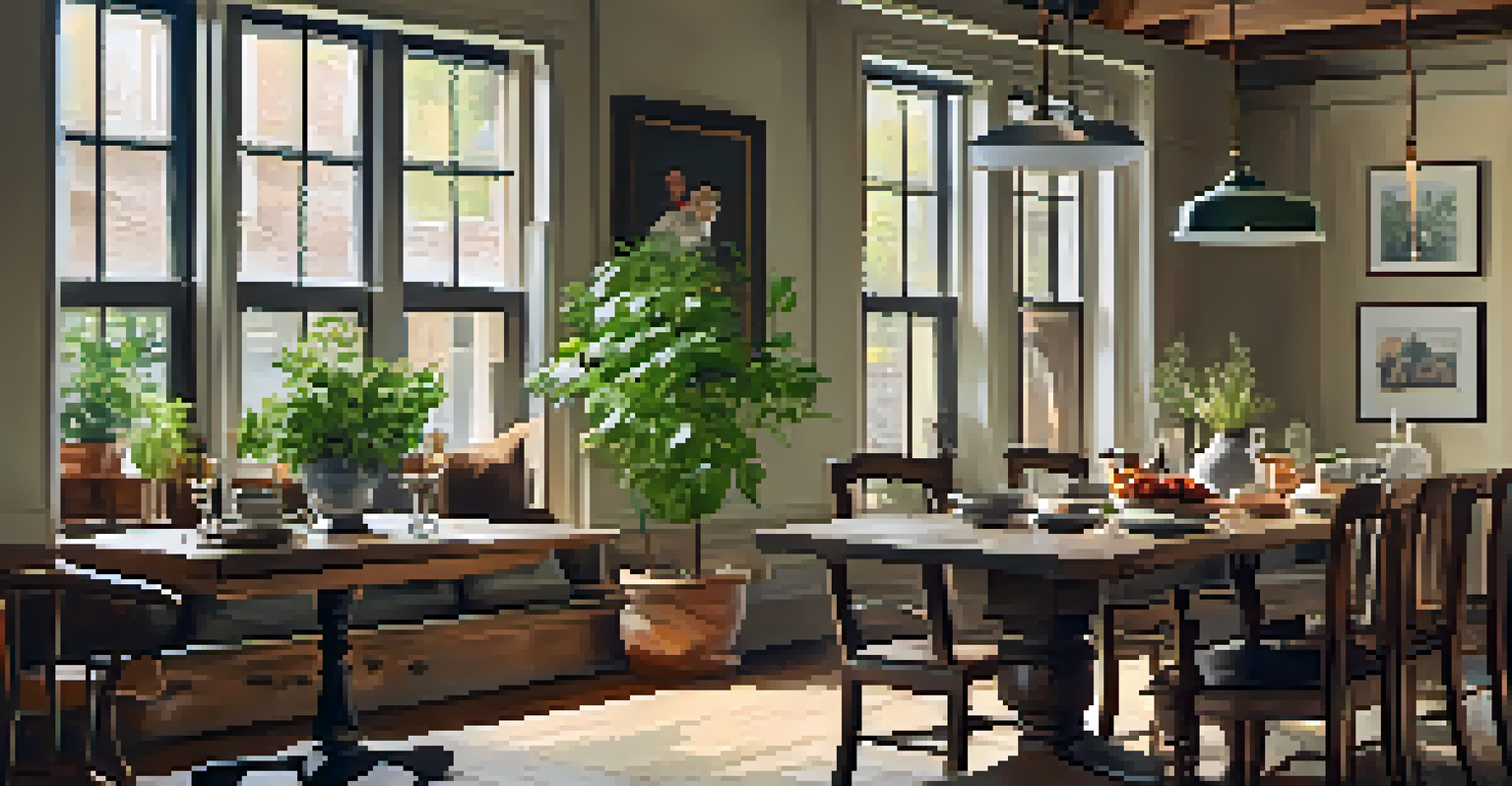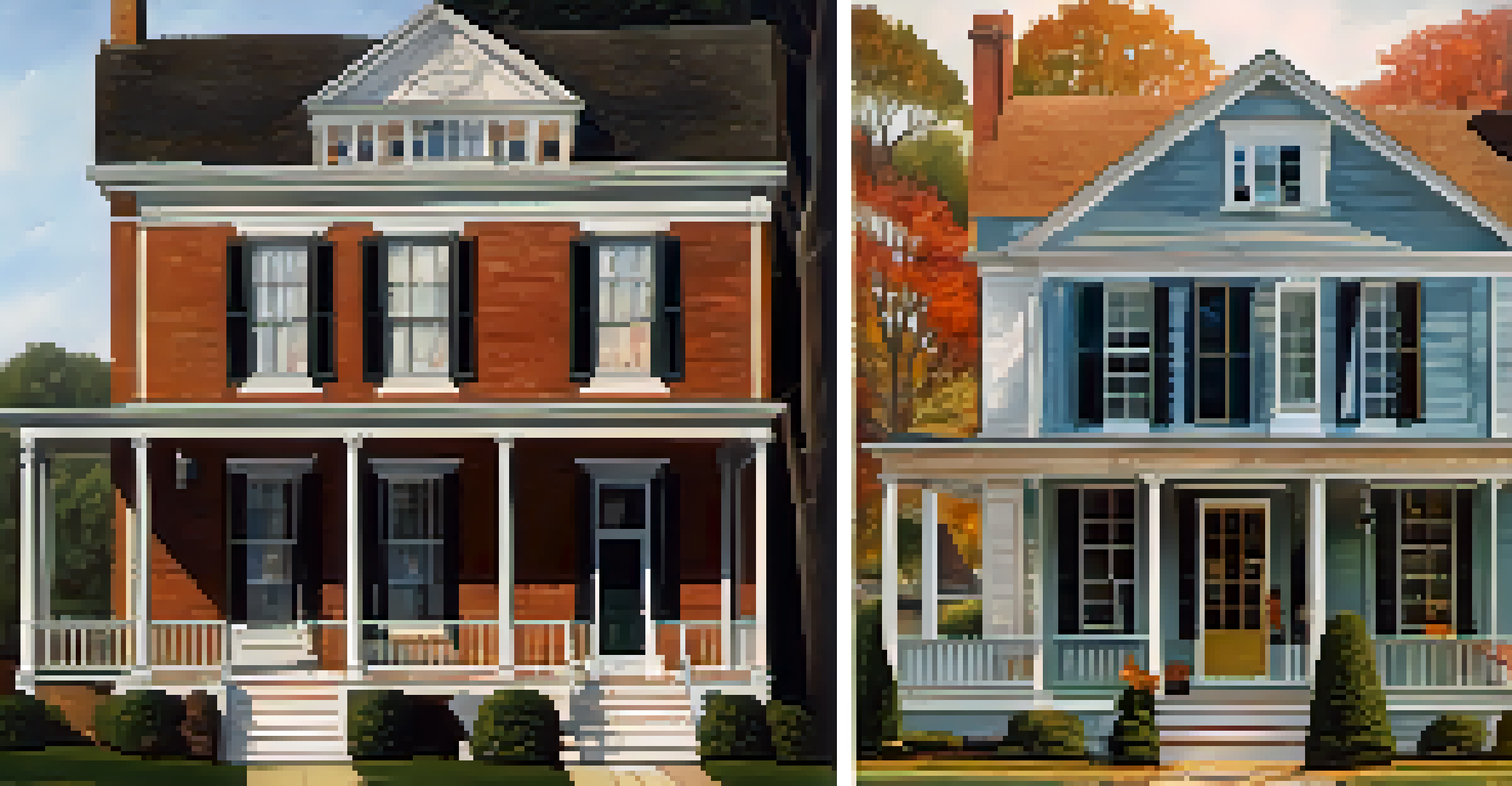The Impact of Social Media on Historic Property Renovation Trends

The Rise of Social Media in Home Renovation
In recent years, social media platforms like Instagram and Pinterest have transformed how people approach home renovation, especially for historic properties. These platforms provide a visual feast, showcasing stunning before-and-after transformations that inspire countless homeowners. As users scroll through curated feeds, they often find innovative ideas that blend modern design with traditional aesthetics.
Social media is about the people, not the latest tech.
This shift has fostered a community of DIY enthusiasts who share their renovation journeys, creating a sense of connection among individuals passionate about preserving history. For many, the search for ideas is no longer limited to magazines or television shows; it's a vibrant online experience. With a single hashtag, users can explore a myriad of styles, techniques, and materials tailored for historic homes.
Moreover, social media serves as a source of encouragement and support. Renovators can easily seek advice, share challenges, and celebrate achievements with a global audience. This interactive environment promotes a culture of learning and innovation, pushing the boundaries of what is possible in historic property renovations.
Influence of Influencers on Renovation Choices
Influencers play a pivotal role in shaping renovation trends, particularly in the historic property sector. These individuals often showcase their renovation projects, highlighting unique design elements that resonate with their followers. Their ability to reach large audiences can significantly impact what styles and materials become popular among homeowners.

Many influencers specialize in historic renovations, bringing attention to the importance of preserving architectural integrity while modernizing spaces. Their expertise often encourages followers to adopt similar approaches, blending old-world charm with contemporary functionality. This trend is evident in the rise of vintage furnishings and sustainable materials as popular choices for renovation projects.
Social Media Transforms Renovation
Platforms like Instagram and Pinterest inspire homeowners with visual ideas and foster a vibrant DIY community.
Additionally, influencers often collaborate with brands to promote specific products, further guiding homeowners in their renovation decisions. This collaboration can introduce audiences to high-quality materials that they might not have considered otherwise, ensuring that historic renovations are both stylish and practical.
The Role of Hashtags in Discovering Trends
Hashtags have become a powerful tool for discovering renovation trends, especially within the historic property niche. By simply clicking on or searching for a specific hashtag, users can access a treasure trove of ideas and inspirations from around the world. This ease of access fosters creativity and encourages experimentation among homeowners.
The best way to predict the future is to create it.
Popular hashtags like #HistoricHomeRenovation or #PreserveThePast connect users with others who share similar interests in restoring old properties. This community-driven approach allows for the exchange of tips, resources, and even local craftsmen recommendations. It creates a supportive environment that empowers people to embark on their renovation journeys.
Moreover, hashtags can help highlight regional trends in historic renovations, showcasing how local culture influences design choices. For example, a homeowner in New England might discover unique shingle styles that are less common in the Southwest, broadening their design perspective and options.
Visual Storytelling and Its Impact on Renovation
Visual storytelling has become a fundamental aspect of social media, particularly in the renovation space. Homeowners are increasingly using platforms like Instagram to document their renovation processes, sharing everything from initial sketches to the final reveal. This narrative approach not only engages followers but also serves as a record of their journey.
Through captivating images and videos, renovators can convey the emotional connection they have with their historic homes. This storytelling aspect often inspires others to undertake similar projects, as they see the passion and dedication that goes into each renovation. It humanizes the process and makes it relatable.
Influencers Shape Renovation Trends
Influencers highlight unique design elements and encourage sustainable practices, significantly impacting renovation choices.
Additionally, visual storytelling allows for the exploration of various renovation techniques and styles in an easily digestible format. The ability to showcase transformations in a visually appealing manner can spark ideas and motivate homeowners to think outside the box when renovating their own historic properties.
Sustainable Practices Influenced by Social Media
Sustainability has emerged as a key consideration in historic property renovations, and social media has amplified this trend. Homeowners are increasingly aware of their environmental footprint, and many look to social platforms for inspiration on eco-friendly practices. This awareness has led to a surge in the popularity of sustainable materials and techniques.
Social media campaigns focusing on sustainability often highlight the importance of reusing and repurposing materials, which is especially crucial in historic renovations. By showcasing successful projects that prioritize sustainability, influencers and renovators alike encourage others to adopt similar practices, creating a ripple effect within the community.
This trend not only benefits the environment but also preserves the unique character of historic properties. By opting for sustainable solutions, renovators can maintain the essence of their homes while minimizing waste and promoting a healthier planet for future generations.
Challenges Faced by Renovators in the Social Media Era
While social media offers numerous benefits for historic property renovation, it also presents unique challenges. One major issue is the pressure to achieve perfection, as users often compare their projects to the polished images seen online. This unrealistic standard can lead to feelings of inadequacy and discourage individuals from starting their own renovations.
Additionally, the abundance of information available on social media can be overwhelming. Homeowners may struggle to discern which advice is credible and applicable to their specific projects. This information overload can result in confusion and hesitation, ultimately delaying renovation efforts.
Challenges of Online Renovation Culture
Homeowners face pressure to achieve perfection and navigate overwhelming information, risking the authenticity of historic renovations.
Finally, there is the risk of trends overshadowing the historical significance of properties. Some renovators may prioritize aesthetics over authenticity, compromising the integrity of their homes. It's essential for homeowners to strike a balance between modern design and preserving the unique character of their historic properties.
The Future of Historic Renovation in a Digital World
Looking ahead, the impact of social media on historic property renovation is likely to continue evolving. As technology advances, new platforms and tools will emerge, further transforming how homeowners approach their projects. Virtual reality, for instance, could allow users to visualize their renovations before making any decisions, enhancing the planning process.
Additionally, the growing emphasis on sustainability and authenticity will likely shape future trends. Homeowners may increasingly prioritize eco-friendly materials and techniques, fostering a culture of responsible renovation that respects both history and the environment. This shift could lead to innovative solutions that blend modern conveniences with traditional charm.

Ultimately, social media will remain an integral part of the renovation journey, providing inspiration, community, and resources for those passionate about historic properties. As more individuals embrace the challenge of renovation, we can expect to see a dynamic interplay between technology and traditional craftsmanship in the years to come.